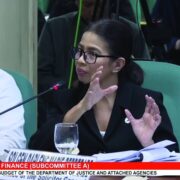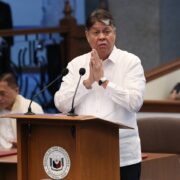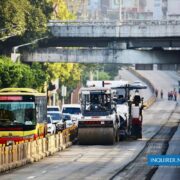Solving severe classroom shortage

President Marcos vowed during his fourth State of the Nation Address (Sona) to build at least 40,000 new public school classrooms before he steps down from office in 2028, an ambitious but critical goal that if accomplished will shape his legacy and help ensure that history will look back kindly on his administration.
Mr. Marcos made the commitment in acknowledgment of the “pitiful” situation that public school students are in, with classrooms packed with students beyond the maximum of 50, thus affecting their ability to learn and their teachers’ ability to effectively impart their lessons.
According to the latest research of the Philippine Institute of Development Studies released last June, congestion was highest in the National Capital Region, particularly in the cities of Caloocan, Valenzuela, and Malabon where almost all of the classrooms had more than 50 students each. Above-average levels of congestion were also observed in the provinces of Rizal (66 percent) and Cavite (57.7 percent).
The severe classroom shortage—particularly in the elementary level—was just one of the issues that Mr. Marcos acknowledged were confronting Filipino learners today, from high dropout rates to learning poverty and woeful proficiency in basic subjects of reading, math and science.
Thus Mr. Marcos gave clear enough instructions during his last Sona, urging the 20th Congress, which will soon tackle next year’s budget, to allocate enough funds to meet the growing demand for classrooms, and to pick up the pace as only 22,000 classrooms had been built over the last three years.
All hands on deck
“(The situation of our students) is really disheartening. Their time in class should no longer be cut short due to a shortage of classrooms,” he said. “With the help of the private sector, we will strive to build 40,000 more classrooms before the end of our administration.”
Putting a big enough dent into the classroom shortage will require all hands on deck, as the perennial problem is too severe to be tackled by the government or the private sector alone.
Indeed, even with the promise of 40,000, it is far from enough. Back in June, Education Secretary Sonny Angara pegged the classroom backlog at 165,000, a shortage that will take a jaw-dropping 55 years to resolve if classrooms are built at the pace over the past 10 years of just about 6,000 classrooms a year.
And this shortage will just grow every year unless the rate of construction outpaces at the very least the new demand to meet a growing population, estimated at 10,000 classrooms a year.
Overcoming these daunting challenges will require out-of-the-box thinking and concerted, determined effort from all parties—government, private sector, local government officials, and nongovernment sector to break out of the inertia of slow action that marked prior years.
Public-private partnership
Angara is certainly doing his part, deciding to adopt the public-private partnership (PPP) model to accelerate classroom construction and at the same time ease the strain on the national budget given other social development and infrastructure priorities.
“The model is ‘build now, lease to government.’ This means the government will build first, then the government pays in installments over 10 years,” said Angara.
This was the same tack that the administration of the late president Benigno Aquino, under whose term Department of Education undertook its first PPP project in 2011, delivering 14,000 classrooms in the first phase and another 4,000 in the second phase.
For Angara, the goal is to construct 15,000 classrooms in 2025 under the PPP for School Infrastructure program Phase 3, then another 30,000 and 60,000 classrooms under PSIP 4 and 5.
The local government units that will receive these public facilities must contribute to the effort to fast-track the construction of the new classrooms by doing their own due diligence.
Positive legacy
Aside from making sure that every peso allocated goes to the project and not to the pockets of politicians and civil servants, they must, for example, make sure that the property on which the schools will be built is suited for the infrastructure, that all the preparatory work including permitting is completed so that construction can start as soon as the funds are downloaded.
“We cannot go about our business-as-usual approach to address the country’s classroom shortage. We need to be innovative in implementing multiple solutions,” stressed EdCom II cochair Sen. Sherwin Gatchalian.
Similar exhortations had been made during previous administrations that have also declared education to be on top of their priorities.
Mr. Marcos, however, appears bent on breaking out of the mold by clearly laying out the policy direction to bring down to a minimum, if not eradicate, the classroom shortage as promised. This will earn for him a positive legacy and fulfillment that will come from knowing that his administration had made a difference in the lives of generations to come.

















A crisis of flood, food, and failed systems